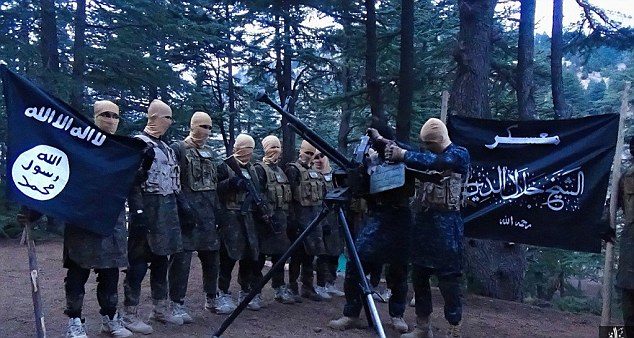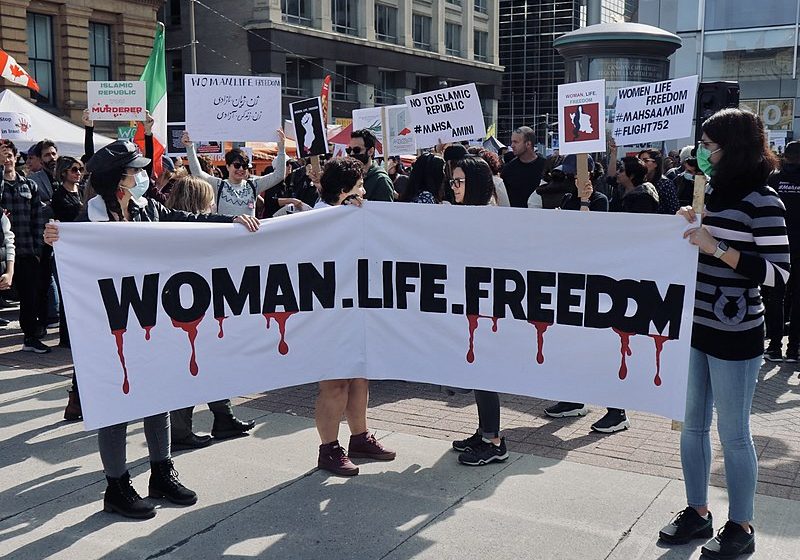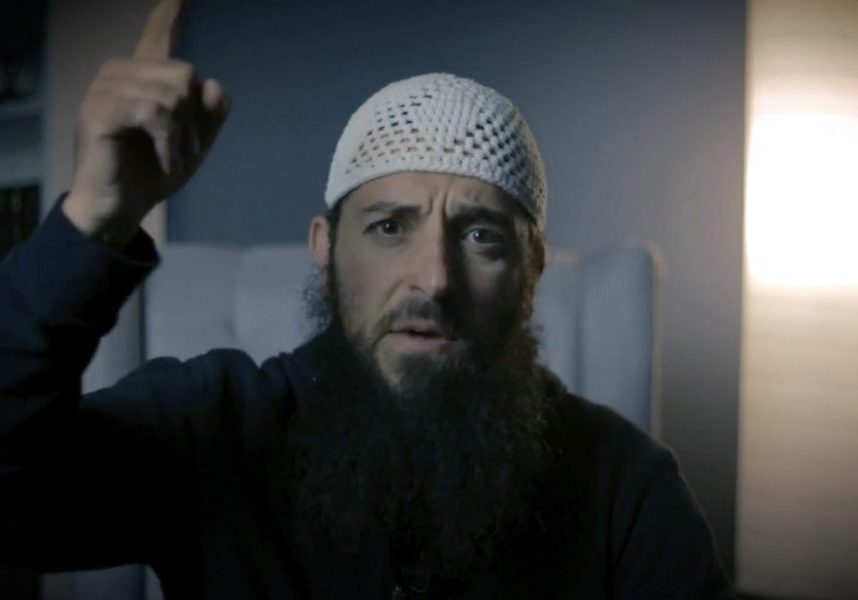Australia/Israel Review, Featured
The Taliban and the global jihad
Aug 26, 2021 | Oved Lobel

It took the Taliban less than ten days to manoeuvre their way into Kabul and reconquer Afghanistan, undoing two decades of hard-fought political, security, and humanitarian gains made by the US and its allies.
With al-Qaeda and the Taliban poised to celebrate the 20th anniversary of the September 11 attacks victoriously in Kabul, it is important to understand that the consequence of US President Joe Biden’s withdrawal from Afghanistan was not simply a local humanitarian catastrophe, though it is definitely that, as anyone who has watched the footage can see.
In “The Graveyard of Empires: The Causes and Consequences of American Withdrawal from Afghanistan,” a recent report I penned for European Eye on Radicalization, I tried to explore the historical and contemporary players in the conflict, their relationship to one another and the likely consequences of American withdrawal. While some of its speculation has been overtaken by events, the overarching picture remains that withdrawal will unleash three related transnational jihadist movements – Iran’s Islamic Revolutionary Guard Corps (IRGC), Pakistan’s Inter-Services Intelligence (ISI), and the Islamic State (IS), which had hitherto been partially kept in check by a small and indefinitely sustainable Western military footprint.
It would not be an exaggeration to say Ayatollah Ruhollah Khomeini’s Islamic Revolution in 1979 catalysed the war that has been raging for the past four decades. While Pakistan had instrumentalised the Muslim Brotherhood to try to conquer Afghanistan since the early 1970s, it was the 1979 mutiny of Captain Ismail Khan, a secret member of Islamist party Jamiat-e-Islami (Jamiat) in the Communist Afghan military, that presented the first existential threat to Kabul.
Jamiat’s leader Burhanuddin Rabbani viewed the revolution in Afghanistan as an extension of that in Iran, and Pakistan’s own Islamists were also inspired by Khomeini’s revolution.
Pakistan’s goal had always been to establish a “Pure Islamic State” in Afghanistan, and its ISI cooperated and competed with the IRGC to build occasionally overlapping Islamist networks to conquer the country in the 1980s. The final evolution of these networks was the development of the so-called Northern Alliance umbrella group for Iran and the Taliban for Pakistan in the 1990s.
Although the Taliban are technically a hierarchical and unitary bureaucracy, they are not an independent organisation as such, but one front of several in an integrated jihadist network revolving around the ISI that shifts personnel and resources to various regional and global fronts using a dizzying array of aliases. This network includes al-Qaeda, which is an essentially indistinguishable component of the Taliban and functionally their foreign operations arm, as well as several other terrorist groups.
Understanding this is essential – despite popular mythology, the Taliban are not an indigenous, nationalist Afghan movement, but a component of the global jihad. It is no more appropriate to describe the Taliban as Afghan than it is to describe Hezbollah as Lebanese – they are both internationalist movements. Like all Islamist movements, nationalism and ethnicity are not concepts with which they identify.
This principle also applies to the ISI itself, which views the actual state of Pakistan in the same way it views Afghanistan, Kashmir, and the rest of the world – merely one front in a global jihad. Contrary to President Joe Biden’s constant assertions since 2008, there is no possibility of compartmentalising counterterrorism operations against al-Qaeda as if they were separate from the war against the Taliban. With the easing of sustained US counterterrorism pressure, al-Qaeda will quickly rebuild its capabilities under the auspices of the Taliban and in league with other elements of the network in Pakistan and Afghanistan like Tehrik-i-Taliban Pakistan (TTP or “Pakistani Taliban”).
Because of the US withdrawal, which directly precipitated the collapse of the Afghan security forces and resultant capture of their sophisticated weapons and vehicles, the world faces the prospect of a transnational jihadi army on the march the likes of which hasn’t been seen since IS captured massive amounts of US military equipment in Iraq shortly after the latter’s withdrawal in 2011. This ISI-led army will exponentially increase the threat to the Pakistani state itself – and its nuclear weapons – even as it brings India under pressure in the wake of Pakistan’s Afghanistan triumph.
As if this weren’t alarming enough, IS’s presence in Afghanistan remains extremely potent, particularly after the Taliban reportedly freed hundreds and perhaps thousands of IS prisoners from detention facilities in and near Kabul. This “Khorasan Province of IS” (ISKP) was by 2019 widely considered IS’s most dangerous regional emirate and was responsible for some of the most horrific terrorist attacks in Afghanistan, particularly against its Hazara Shi’ite minority. Even after the trilateral cooperation between the Afghan government, the Taliban, and the US – including the US acting as the Taliban’s air force in its battles with the group – ISKP retained the capability to conduct major attacks in the country and has been linked to several regional and international attacks as well.
With the end of the Afghan security forces and their joint counterterrorism operations with the US, and with the Taliban distracted over the past several months conquering the country, ISKP has likely reconstituted itself and is poised to re-emerge in an even more dangerous fashion.
ISKP has also reportedly significantly infiltrated the ISI’s network. It is unclear which network will come out on top in this intra-jihadi competition, but regardless, this battle will further threaten Pakistan’s existence. Moreover, their competition will stop neither al-Qaeda nor ISKP from launching major attacks against the region and the West at the earliest opportunity. Without any US intelligence assets remaining in the country, the capacity to prevent these attacks has been severely diminished.
Finally, there is the IRGC, which has maintained close ties with every side of the Afghan conflict since the 1980s, including significant operational ties to the Taliban. Teheran has armed, trained and protected the Taliban since at least 2001 in the name of the pan-Islamic jihad. Teheran even reportedly recruited Sunni Afghan refugees in Iran for the Taliban’s ranks and embedded Iranian intelligence officers in its assaults.
Furthermore, as part of its competitive cooperation with the ISI network, Iran has been a primary headquarters for al-Qaeda alongside Pakistan for decades. Al-Qaeda’s number two leader, Abu Muhammad al-Masri, was assassinated in Iran, reportedly by Israel’s Mossad, in 2020.
For decades, the IRGC has been throwing foreign legions of Afghan Shi’ite jihadists into conflicts from Iraq to Syria. Many of these are recruited from the Afghan Hazara refugee population in Iran. The new refugee crisis in the wake of the Taliban conquest will provide the IRGC with a mass of fresh Hazara recruits to press-gang into its jihad across the Middle East.
The IRGC-affiliated Northern Alliance, the Afghan factional militia enthroned by the US as Afghanistan’s new government in 2001 after several years of losing ground to the Taliban, was built around a core of Shi’ite jihadists known as Hizb-e-Wahdat (Wahdat). While for now the IRGC doesn’t seem to be contesting the Taliban takeover, this could change at any moment. Nearly all the warlords who comprise the Northern Alliance are still alive, and while they have currently fled or come to agreements with the Taliban, this is meaningless in the long term – the situation was identical in the 1990s.
It may seem paradoxical that the IRGC supports all sides against one another, but its primary pursuit is the chaos and instability that allows it to gain influence over all sides and export and entrench its Islamic revolution.
Iran, Pakistan, and now Afghanistan under the Taliban – which for the first time ever now rules the entire country – form a triangle of competing, but also frequently cooperative, global jihad.
The reverberations of the Taliban’s victory will likely extend far beyond the region. Like the Soviet withdrawal in the 1980s, the Israeli withdrawal from Lebanon in 2000 and Gaza in 2005, and the American withdrawal from Iraq in 2011, the perception among jihadists that they have defeated a major power yet again will supercharge both regional and transnational terrorist groups, and vastly increase the terror threat to virtually every nation on the globe.
With the end of both the Western counter-terrorism operations and intelligence presence in the region, it is only a matter of time before the security consequences of the Afghanistan withdrawal manifest themselves in a deadly fashion. Regardless of which jihadi network comes out on top in the struggle, the battle will almost certainly not stay local for long.






